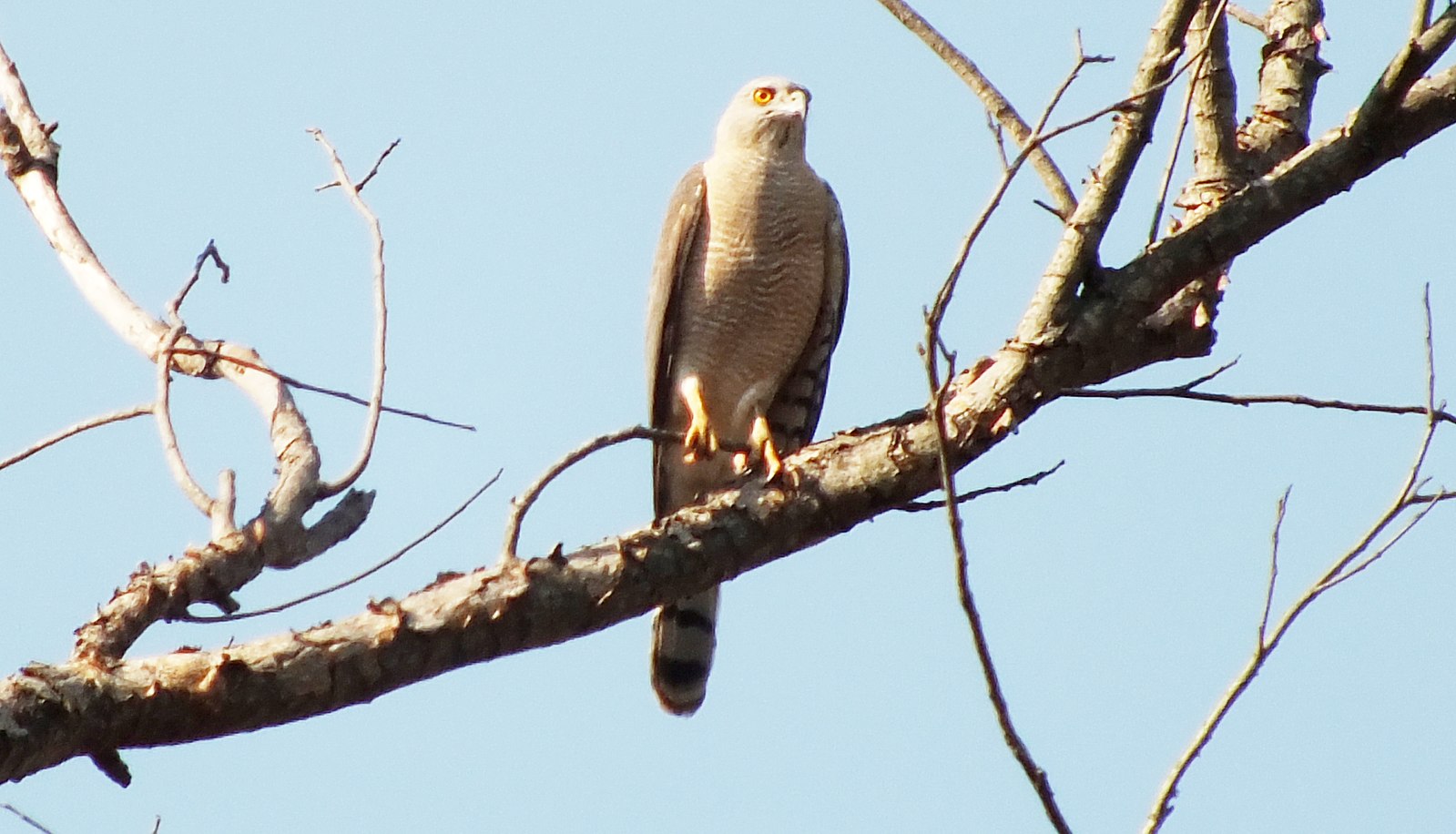Shikras, scientifically known as Accipiter Badius dussumieri, are relatively small-sized raptors that are quite similar to other sparrowhawk species. However, they cannot survive in extreme cold or high altitudes, making it challenging for them to thrive in snowy conditions.
Can Shikras Survive in Snow?
No, Shikras cannot survive in extreme cold or high altitudes. Their bodies are not adapted to withstand freezing temperatures, and their feet are vulnerable to frostbite in very cold conditions. Shikras are found in a wide range of habitats, including forests, farms, and urban areas, with their population spread across the Lower Himalayas (up to 1400mts) and all over the remaining Indian subcontinent. However, they cannot survive in areas with heavy snowfall or prolonged periods of freezing temperatures.
Shikra Plumage and Hunting Behavior
 Image source: SHIKRA by Shiv’s fotografia
Image source: SHIKRA by Shiv’s fotografia
Shikras have different plumage as juveniles and adults. Young ones have brown upper parts and bright yellow eyes, while adults have an entirely different plumage with slate grey wings and upper parts and a whitish belly with rufous stripes. Males have vibrant red irises, while females, larger in size, tend to have deep yellow or yellow-orange eyes.
Shikras are known for being tenacious hunters, employing various hunting strategies to catch their prey, which includes lizards, frogs, large insects, termites, small birds, and mammals, including rodents. They have been documented taking young birds from their nests, including nests of weavers, Bronze Mannikin, and Gorgeous Bush Shrike.
Shikra Nesting and Breeding
Shikras build a relatively small nest made of sticks, often placed in the high fork of a woodland or exotic tree, such as eucalyptus. Both the male and the female work together to construct their nest, with the female doing about twice as much of the work as the male. The female lays her eggs, usually between 2 and 4, and incubates them for approximately 3 weeks. The male brings the food, and the female is the one who most often feeds the young by tearing off tiny pieces of food with her beak and lowering her beak to her hungry nestlings.
Caring for Shikras in Captivity During Winter
In captivity, an appropriate diet for a Shikra does not include a high amount of fat, as they aren’t able to burn nearly as many calories with their relatively sedate lifestyles. A high-fat diet will lead to obesity and the diseases that come with it. Therefore, it is crucial to provide a balanced diet for Shikras in captivity, especially during winter, to ensure their overall health and well-being.
Additionally, it is essential to provide adequate warmth and shelter for Shikras during winter, especially in areas where temperatures drop below freezing. Their bodies are not adapted to withstand freezing temperatures, and their feet are vulnerable to frostbite in very cold conditions.
Conclusion
In summary, Shikras cannot survive in extreme cold or high altitudes, making it challenging for them to survive in snowy conditions. Providing adequate warmth and shelter, along with a balanced diet, is essential for their survival during winter. Understanding the specific needs and adaptations of Shikras is crucial for their successful care and conservation.
References:
– Michigan-Sportsman.com – Anybody Raise Chukars in Winter?
– BirdTricksStore.com – Parrots and Cold Weather
– JunoonAdventure.in – Indian Shikra Bird Watching Trek
– PeregrineFund.org – Shikra
– BackyardChickens.com – Chukars in New York Winter Preparation Questions


